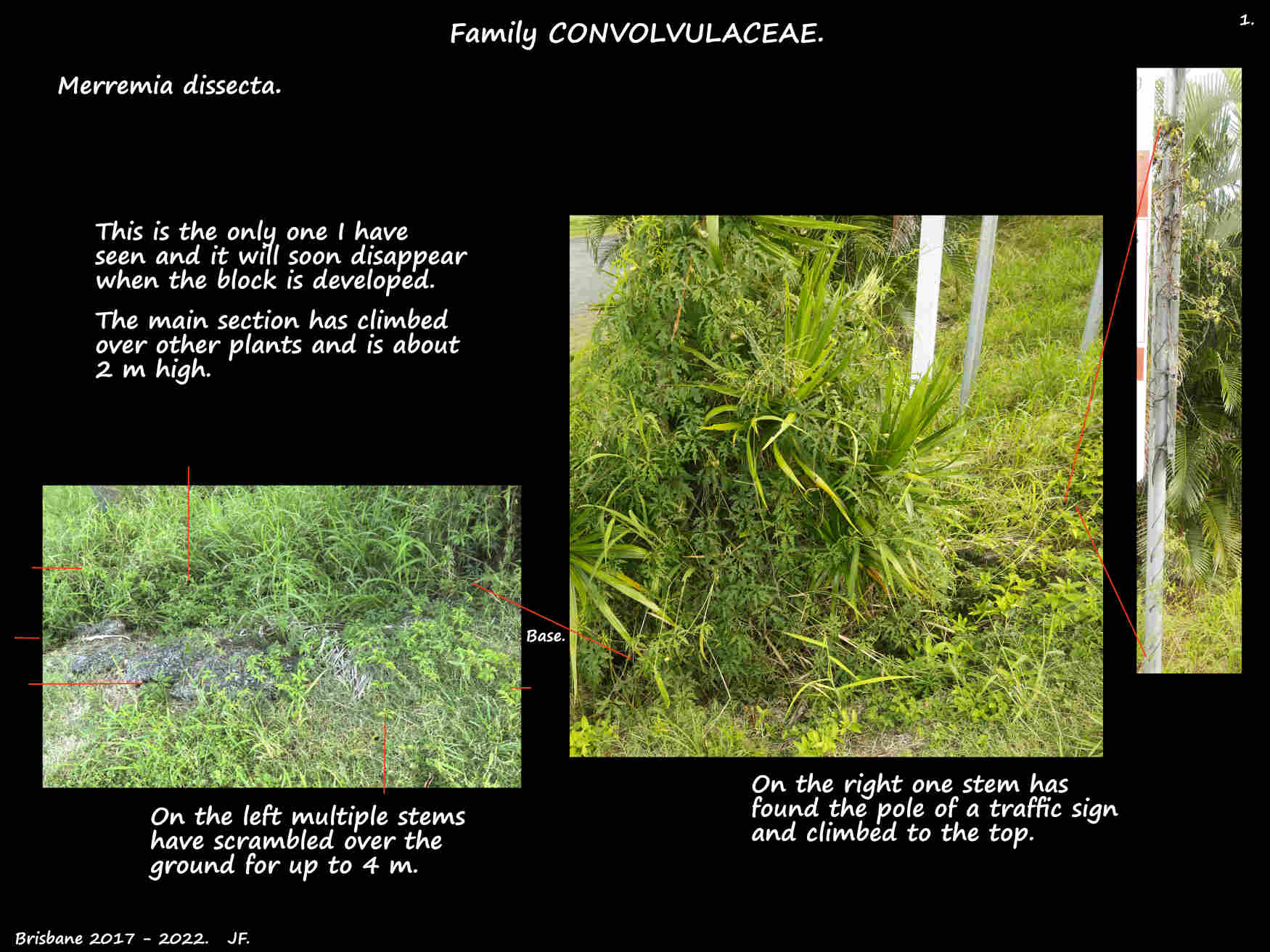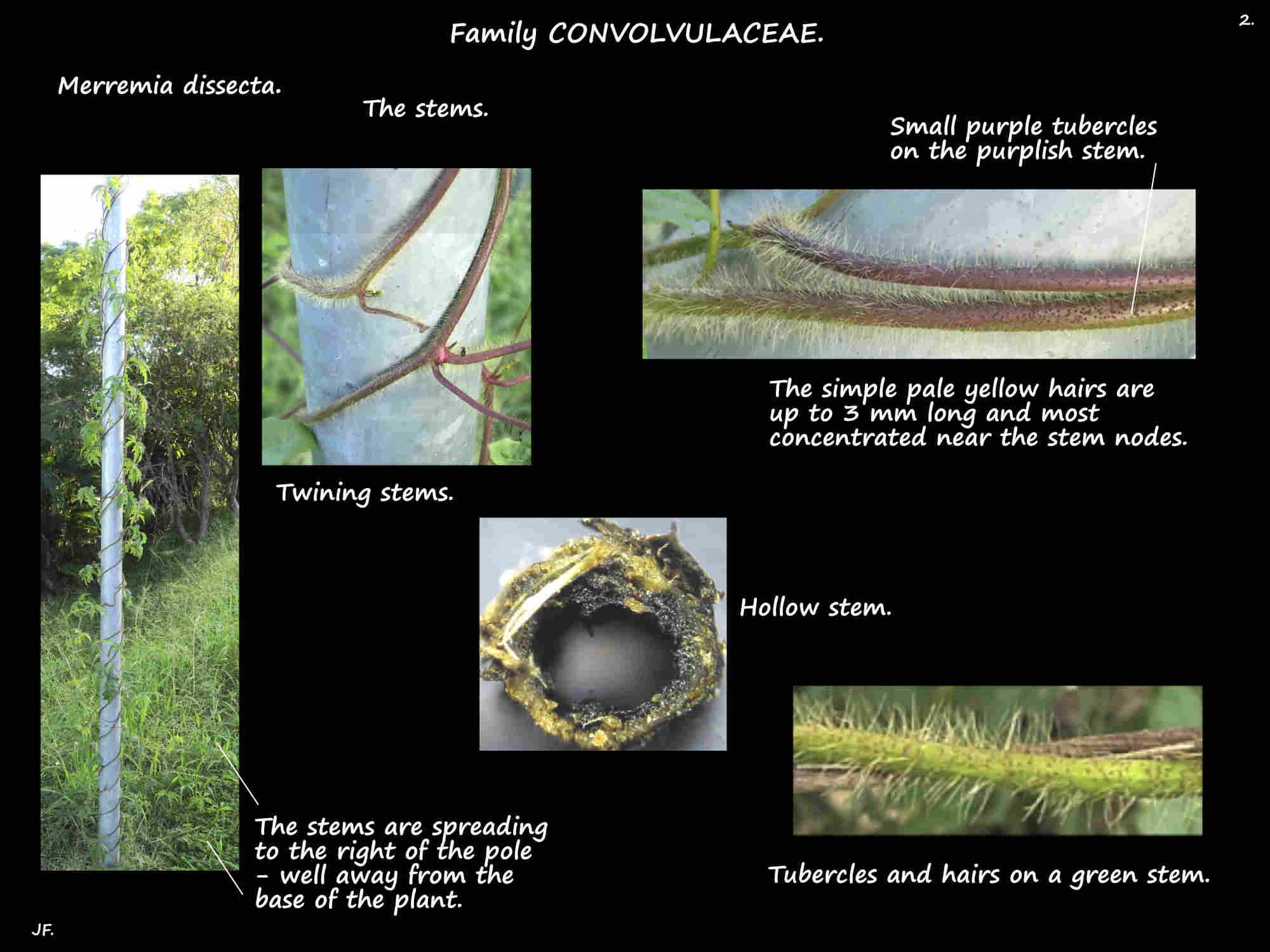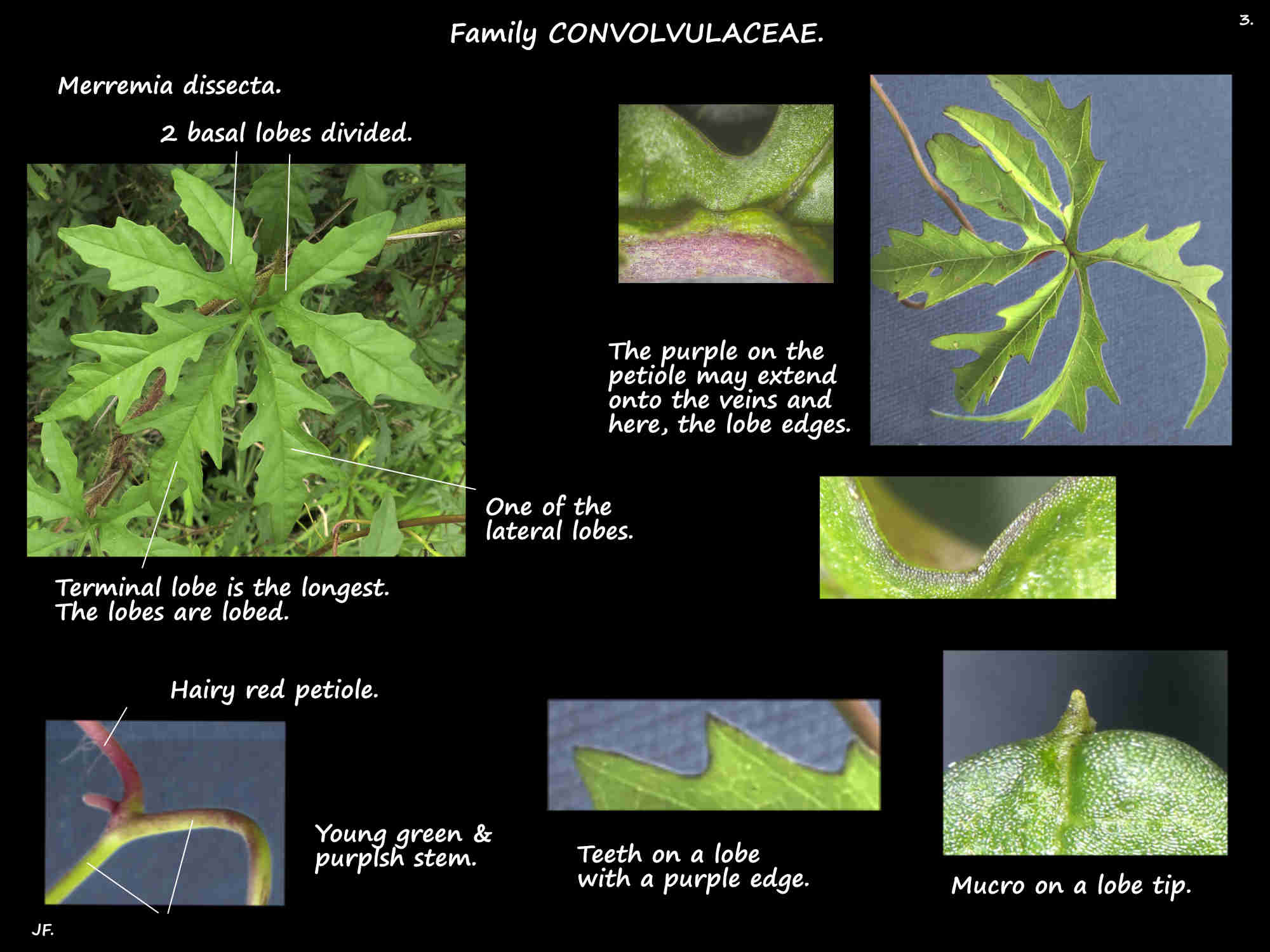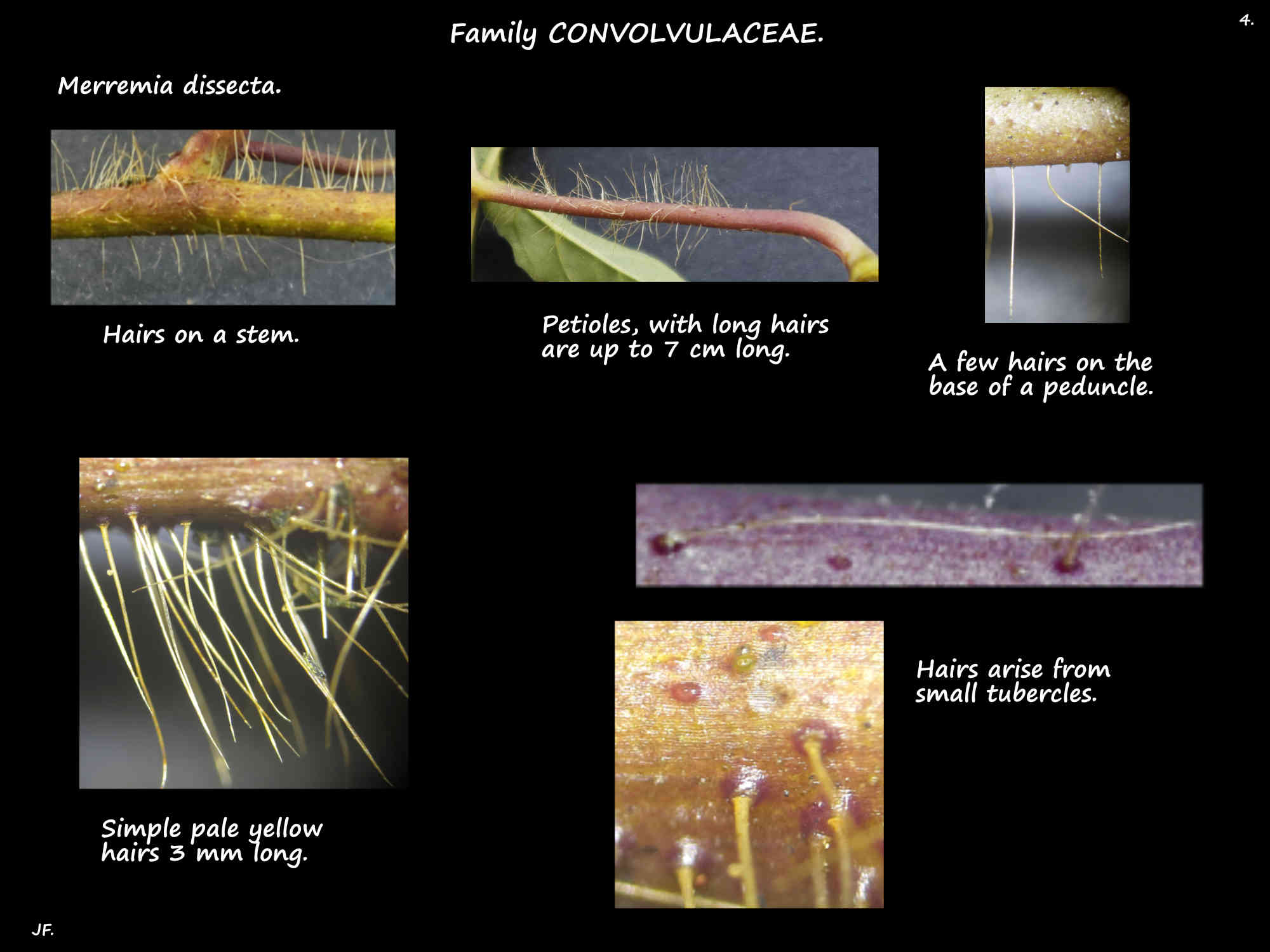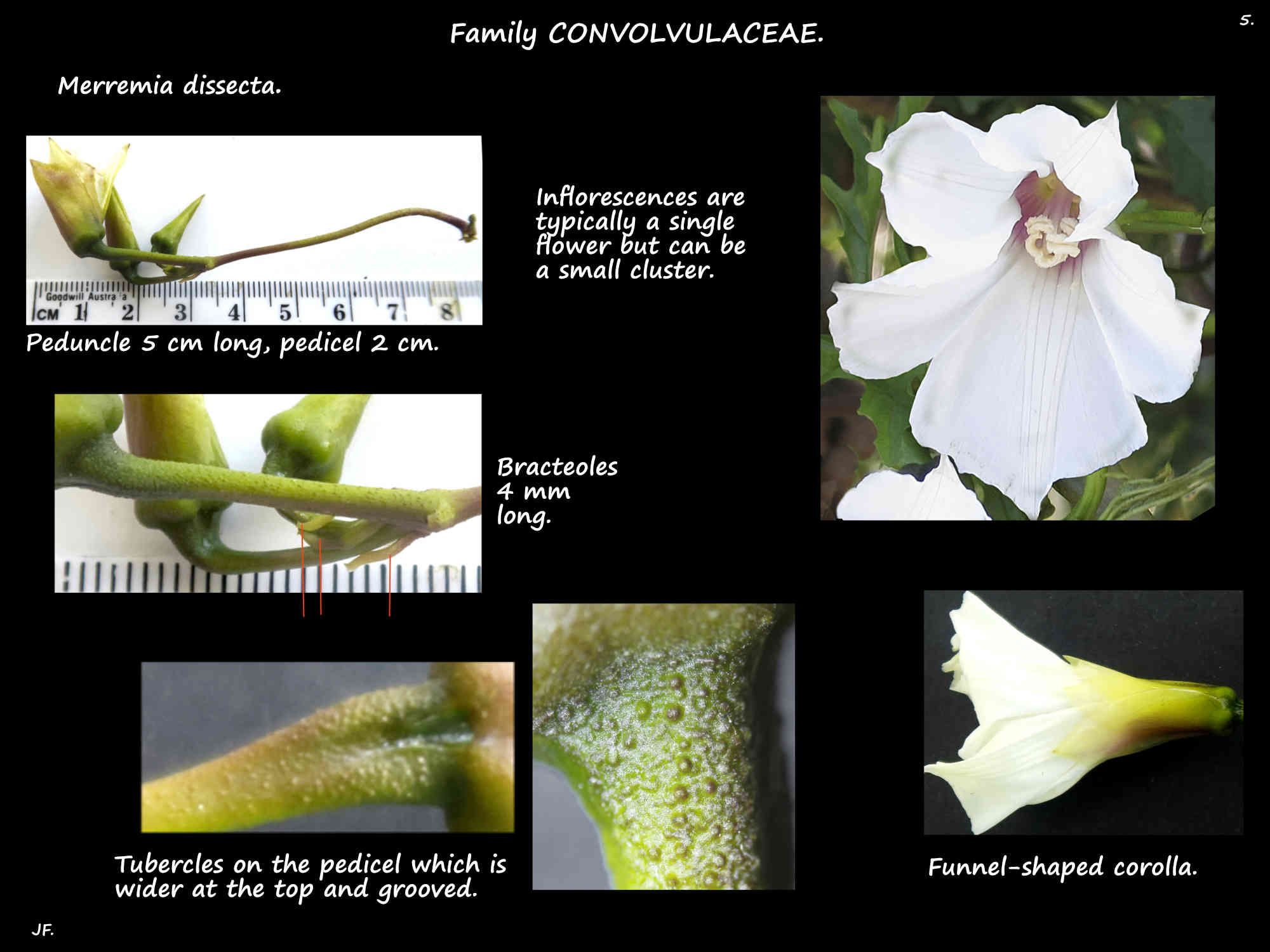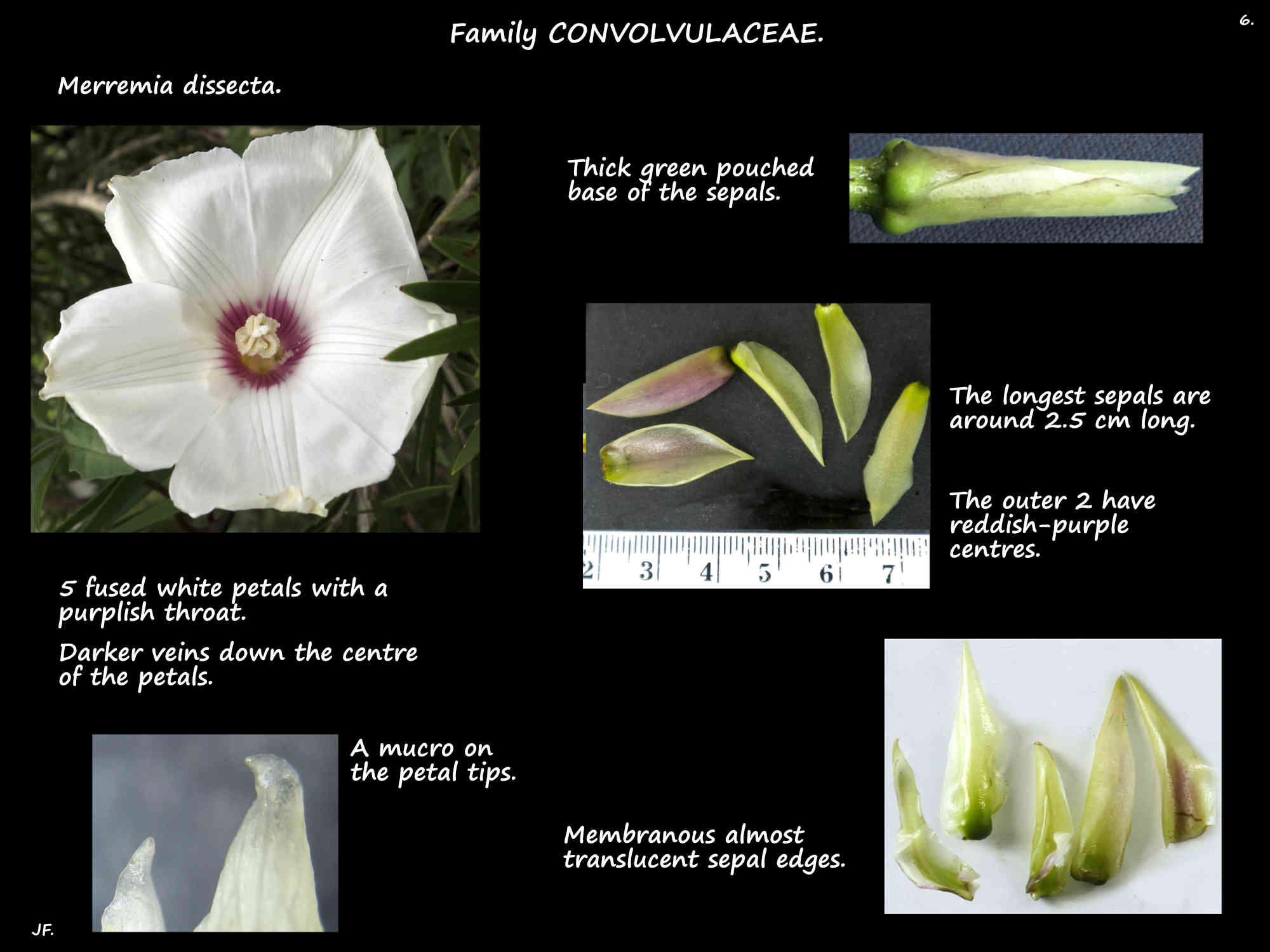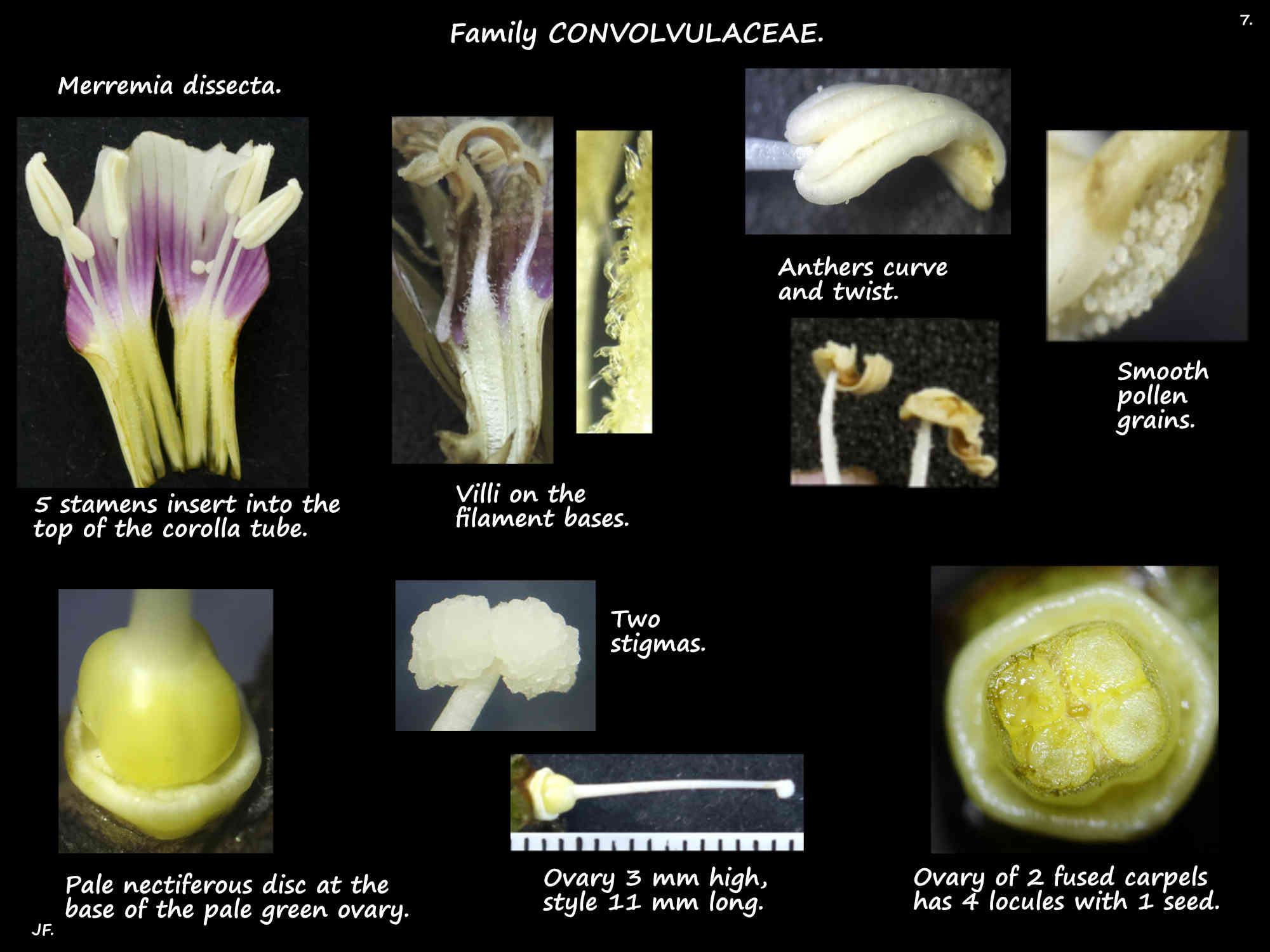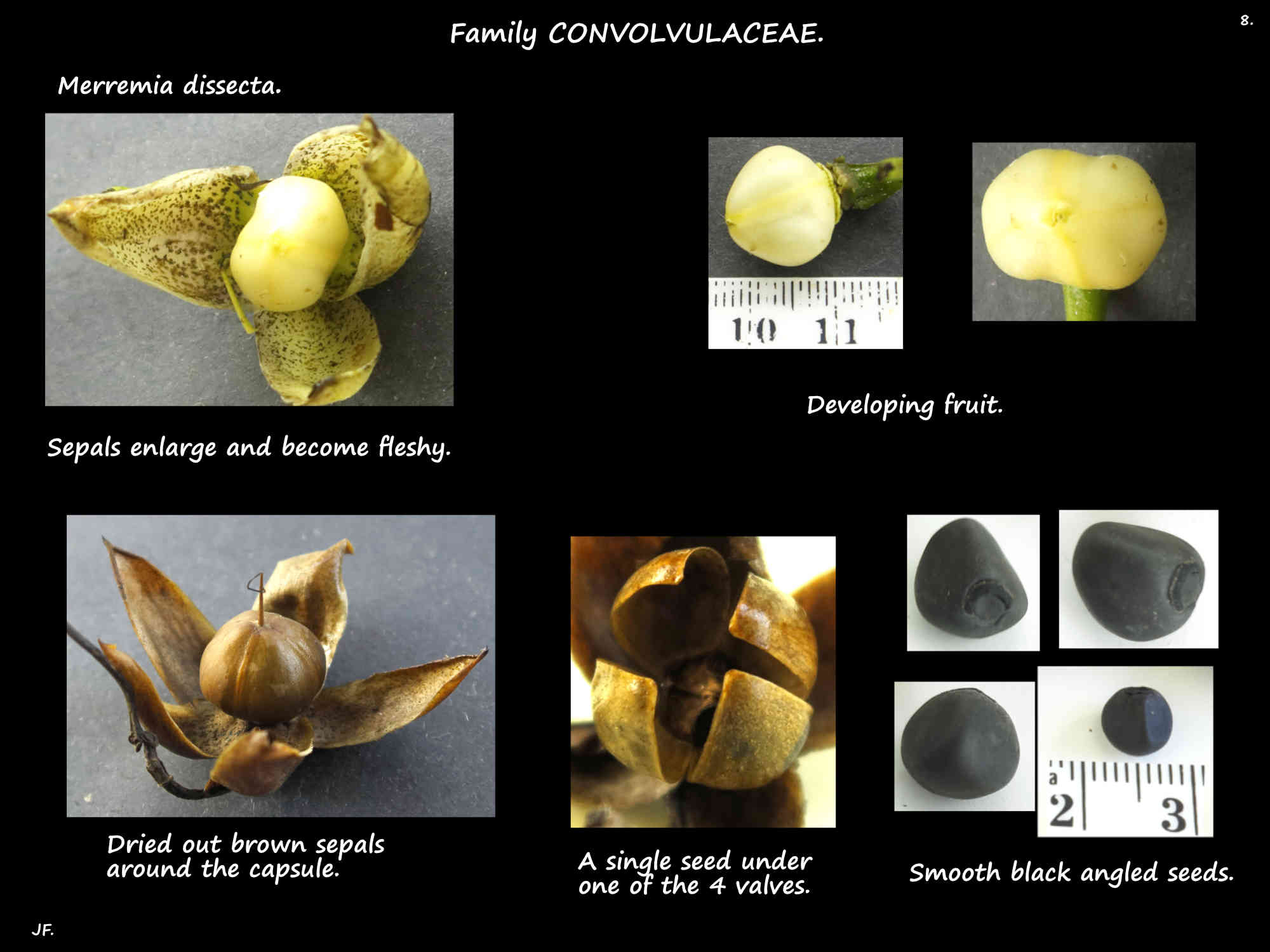Merremia dissecta.
Common names include White Convolvulus, Snakevine and bindweed.
Synonyms from being moved between genera in Tribe Merremieae are Convolvulus dissectus,
Ipomoea dissecta, Ipomoea sinuata, Ipomoea reniformis, Operculina dissecta and Merremia sinuata.
There is no Merremia dissecta in the World Flora Online list of species but many countries around
the world, including Australia recognise that name.
It is an introduced species that is widespread in northern Australia.
It is naturalised in S. E. Queensland where it is a weed.
They are herbaceous vines with thin 3 to 4 m long stems that twine.
With no support they spread for metres along the ground.
The young green stems become a purplish colour and the oldest ones are woody.
Stems have small tubercles and the 3 mm long pale yellow hairs are sparse to dense.
The alternate leaves, up to 11 cm long are on hairy petioles up to 7 cm long.
The blade is deeply palmately divided into long lanceolate lobes.
Typically there are 5 lobes with the basal 2 often divided giving 7.
There may occasionally be 9 lobes or some leaves that are undivided.
The terminal lobe, up to 10 cm is the longest and the basal ones the shortest.
The lobes have a tiny mucro at the tip and the wavy edges are lobed to various degrees.
There are usually no hairs but sometimes there are a few on the veins underneath.
Axillary inflorescences are almost always a single flower but there may be a few.
The peduncles are up to 10 cm long and the pedicels 2.5 cm.
The green to purplish peduncles have a few long simple hairs.
The hairless pedicel is wider at the top where there are tiny nodules.
The flowers, with parts in 5’s are around 3 cm wide and only open for a few hours a day.
The calyx has 5 free sepals of slightly different lengths with the longest up to 2.5 cm.
They are oblong with a tiny mucro at the tip and a thin edge.
They become larger and fleshy as the fruit grows and they persist after the capsule has opened.
The 5 fused petals form a salverform or funnel-shaped corolla up to 4.5 cm long.
The petals are white with a distinct band down the centre and a red to purple throat.
The 5 stamens are of unequal length.
They insert onto the corolla tube and do not extend beyond it.
There are tiny white hairs on the broader base of the 5 mm long filaments.
The white anthers are up to 5 mm long and open via longitudinal slits.
As the 2 sacs open to release the pollen the anthers curve backwards and the end twists.
The smooth superior ovary, around 2 mm long has 2 locules.
The single style has 2 spherical white stigmas.
Around the base of the ovary is a continuous nectiferous disc 2 mm high.
The globular fruit are capsules with 2 chambers opening with 4 valves.
Capsules are up to 2 cm long and have 2 to 4 smooth black seeds.
The enlarged sepals become brown and woody.
This is a very variable species and 2 varieties are described one with the corolla as above and no
hairs on the sepals and the other with all white flowers and larger sepals that may have hairs.
J.F.
